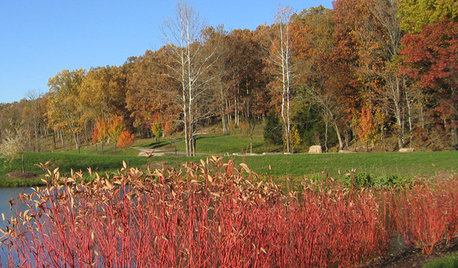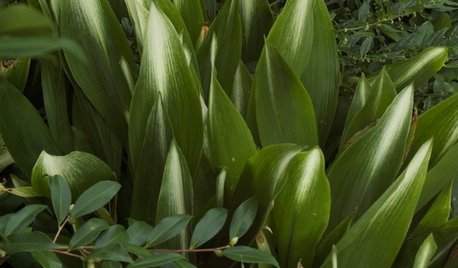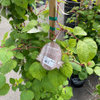Wondering about privet hedge
dirtdigging101
12 years ago
Related Stories

LANDSCAPE DESIGNHow Low Can Hedges Go? Discover Unusual Garden Borders
Short enough to step over, high enough to be a stretch ... check out these radically different hedge styles and tell us your opinion
Full Story
GARDENING GUIDES9 Low-Growing Hedges That Make Good Neighbors
Define garden areas or borders without blocking the view, with these evergreen shrubs that take kindly to trimming
Full Story
GARDENING GUIDESGreat Garden Combo: 3 Wonderful Plants for a Deer-Resistant Screen
Protect your privacy and keep deer at bay with a planting trio that turns a problem garden area into a highlight
Full Story
GARDENING GUIDESThese Hedges Can Add Interest to Your Winter Garden
Evergreen trees and shrubs provide structure and color in the winter months — and can attract wildlife too
Full Story
LANDSCAPE DESIGN7 Evergreen Wonders of the Plant World
Year-round interest, structure and beautiful color? These top-notch evergreens have gardens covered
Full Story
GARDENING GUIDESNew Ways to Think About All That Mulch in the Garden
Before you go making a mountain out of a mulch hill, learn the facts about what your plants and soil really want
Full Story
WORKING WITH PROSWhat Do Landscape Architects Do?
There are many misconceptions about what landscape architects do. Learn what they bring to a project
Full Story
COFFEE WITH AN ARCHITECTWhat My Kids Have Taught Me About Working From Home
Candy and Legos aren't the only things certain small people have brought to my architecture business
Full Story
FALL GARDENINGWhat Monarch Butterflies Taught Me About Garden Design
Thinking like a butterfly leads to fresh perspectives in the garden and in life
Full Story
LANDSCAPE DESIGNTouches of Grandness for the Garden
You don’t need a king-size yard to add a little formality to your landscape with fanciful hedges, topiaries and paths
Full StoryMore Discussions








ken_adrian Adrian MI cold Z5
dirtdigging101Original Author
Related Professionals
Arnold Landscape Architects & Landscape Designers · Elgin Landscape Contractors · Anderson Landscape Contractors · Caldwell Landscape Contractors · El Sobrante Landscape Contractors · Gallatin Landscape Contractors · Hannibal Landscape Contractors · Vadnais Heights Landscape Contractors · North Aurora Window Contractors · West Springfield Window Contractors · Alameda Driveway Installation & Maintenance · Ashburn Driveway Installation & Maintenance · Reston Driveway Installation & Maintenance · Lockport Decks, Patios & Outdoor Enclosures · Shirley Decks, Patios & Outdoor Enclosuresbrandon7 TN_zone7
brandon7 TN_zone7
ken_adrian Adrian MI cold Z5
jay_7bsc
dirtdigging101Original Author
Iris GW
brandon7 TN_zone7
jay_7bsc
Iris GW
brandon7 TN_zone7
jay_7bsc
brandon7 TN_zone7
jay_7bsc
brandon7 TN_zone7
dirtdigging101Original Author
dirtdigging101Original Author
Embothrium
dirtdigging101Original Author
harveyhorses
Matt Webster